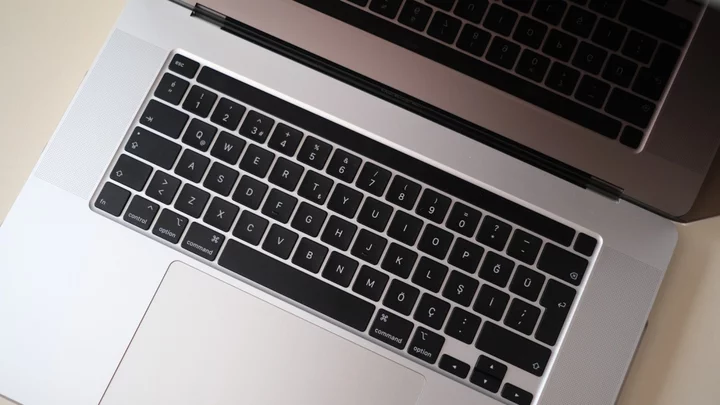
Chile Discusses IRA Benefits With US to Lure Lithium Investments
Chile’s government is in talks with the Biden administration over benefits that US companies could access from the
2023-11-21 02:27

Bioenterprise Canada CEO wins Lifetime Achievement Award
GUELPH, Ontario--(BUSINESS WIRE)--May 30, 2023--
2023-05-30 22:59

WhatsApp set to add major features including a new username system, beta versions suggest
WhatsApp is developing a range of new features, including a new username system and a screen-sharing option during video calls. The username system will allow users to select a unique name attached to their account, WABetaInfo first reported, based on changes spotted in the app’s beta version 2.23.11.15 for Android. This may enable users to find each other through usernames instead of phone numbers in the future, with conversations using the username expected to be end-to-end encrypted. Beta testers of the app’s 2.23.11.19 version also found a new screen-sharing feature that reportedly enabled users to share the contents of their screen on video calls, also allowing people to record sections of the call. Some testers also reported finding a “status archive” feature, limited to business accounts, which enables users to archive their WhatsApp statuses after 24 hours and reshare them later in the future. These features appear to be under development and not yet available to all testers. They may be gradually rolled out to users. Other changes include a new “password reminder feature” for end-to-end encrypted backups on WhatsApp for iOS and Android as well as an improved support for message drafts. The latter is expected to help users who may forget about partially composed messages in the middle of conversations. The Meta-owned company previously did not indicate the presence of a message under drafts in the chat bar and the new indicator of unfinished messages at the top of the chat list may allow users to notice this. Some users may notice a few small changes in WhatsApp’s bottom navigation bar on downloading the beta for Android 2.23.11.19 update. A new icon and a prompt during video calls seem to help users share their screen. The feature records everything displayed on one’s screen and shares it with the recipient. But the recipient may be unable to get the content of the sharer’s screen in case they are using an outdated WhatsApp version. Potential wider accessibility of this feature, however, remains unclear as it may not work in large group calls. Read More Major WhatsApp update enables secret chats WhatsApp update fixes glaring irritation when using app WhatsApp update will let people edit messages after they are sent
2023-05-30 13:59

Crypto Startup Nova Labs is Betting on $5 Mobile Phone Plans
Nova Labs Inc., a blockchain startup building what it calls a “decentralized wireless network”, said it’s offering a
2023-08-16 06:54

Pikmin 4 Preview
The Switch might be showing its age, but Nintendo still has exciting releases in store
2023-06-26 21:45

The best travel app is an iPhone feature you're probably ignoring
I'm not abandoning Google Maps anytime soon, but I've recently stumbled upon the joys of
2023-06-05 10:46

Virginia finalizes guidance on transgender students, including rolling back some accomodations
Virginia Gov. Glenn Youngkin’s administration says it has finalized new policies on the treatment of transgender students
2023-07-19 06:59

T-Mobile to Offer All-New iPhone 15 Lineup
BELLEVUE, Wash.--(BUSINESS WIRE)--Sep 12, 2023--
2023-09-13 08:27

Leadership Development Platform, Monark, Raises $1.5M Seed Round
CALGARY, Alberta--(BUSINESS WIRE)--Sep 19, 2023--
2023-09-20 00:16

US Faced Record Number of Natural Disasters This Year With Losses Topping $1 Billion
There’s more than two months left in the year, but the US has already faced a record number
2023-10-11 01:50

Thousands of Reddit communities go dark to boycott third-party app charges
Thousands of Reddit communities have gone dark this week in protest of upcoming API changes, which include a controversial policy that will charge some third-party apps for continued use
2023-06-14 06:48

Can You Pre-load Warhammer 40,000: Darktide?
Warhammer 40,000: Darktide is coming to Xbox Game Pass and players wonder if they can pre-load it onto their consoles.
2023-10-04 06:53
You Might Like...

PayRetailers Appoints Jonathan Wilson as Chief Risk Officer

Developer: Apple Ignores MacOS Ventura App Management Bug for 10 Months

India Billionaire’s Chip Foray Faces Setback as Foxconn Exits

Renogy X Introduces Renogy X PowerTower™, an All-in-One Inverter and Battery Backup Solution at RE+ 2023

Online misinformation runs rampant during coup attempt in Russia

Amazon's Kindle Scribe reads well, but its writing could use some work

How to Install Mods on Starfield

NCC Bank of Bangladesh Ensures Secure and Seamless Real-Time Binimoy Transactions with Thales Luna HSMs
